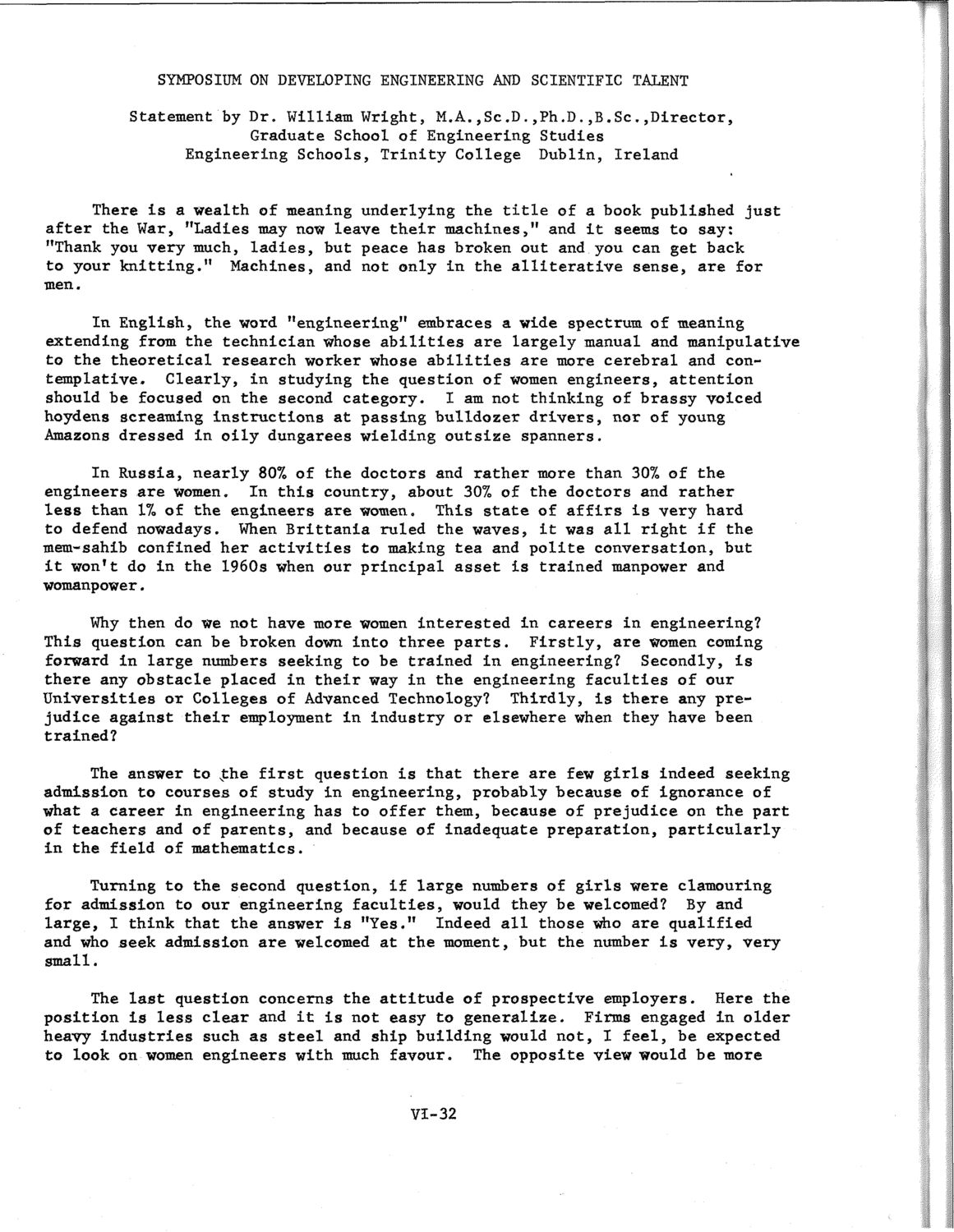| |
| |
Caption: SWE - Proceedings of the First International Conference of Women Engineers and Scientists
This is a reduced-resolution page image for fast online browsing.

EXTRACTED TEXT FROM PAGE:
SYMPOSIUM ON DEVELOPING ENGINEERING AND SCIENTIFIC TALENT Statement by Dr. William Wright, M.A.,Sc.D.,Ph.D.,B.Sc.,Director, Graduate School of Engineering Studies Engineering Schools, Trinity College Dublin, Ireland There is a wealth of meaning underlying the title of a book published just after the War, "Ladies may now leave their machines," and it seems to say: "Thank you very much, ladies, but peace has broken out and you can get back to your knitting." Machines, and not only in the alliterative sense, are for men. In English, the word "engineering" embraces a wide spectrum of meaning extending from the technician whose abilities are largely manual and manipulative to the theoretical research worker whose abilities are more cerebral and contemplative. Clearly, in studying the question of women engineers, attention should be focused on the second category. I am not thinking of brassy voiced hoydens screaming instructions at passing bulldozer drivers, nor of young Amazons dressed In oily dungarees wielding outsize spanners. In Russia, nearly 80% of the doctors and rather more than 30% of the engineers are women. In this country, about 30% of the doctors and rather less than 1 o of the engineers are women. This state of affirs is very hard 7 to defend nowadays. When Brittania ruled the waves, it was all right if the mem-sahib confined her activities to making tea and polite conversation, but it won't do in the 1960s when our principal asset is trained manpower and womanpower. Why then do we not have more women interested in careers In engineering? This question can be broken down into three parts. Firstly, are women coming forward in large numbers seeking to be trained in engineering? Secondly, Is there any obstacle placed in their way in the engineering faculties of our Universities or Colleges of Advanced Technology? Thirdly, is there any prejudice against their employment in industry or elsewhere when they have been trained? The answer to vthe first question is that there are few girls indeed seeking admission to courses of study in engineering, probably because of ignorance of what a career in engineering has to offer them, because of prejudice on the part of teachers and of parents, and because of inadequate preparation, particularly in the field of mathematics. Turning to the second question, if large numbers of girls were clamouring for admission to our engineering faculties, would they be welcomed? By and large, I think that the answer is "Yes." Indeed all those who are qualified and who seek admission are welcomed at the moment, but the number is very, very small. The last question concerns the attitude of prospective employers. Here the position is less clear and it is not easy to generalize. Firms engaged in older heavy industries such as steel and ship building would not, I feel, be expected to look on women engineers with much favour. The opposite view would be more VI-32
| |